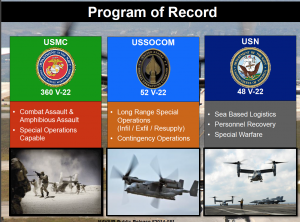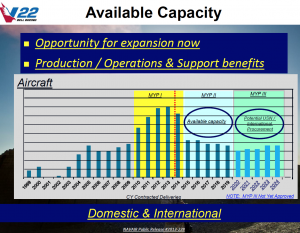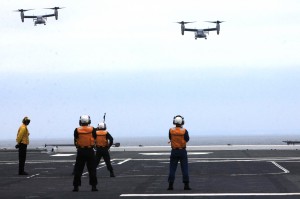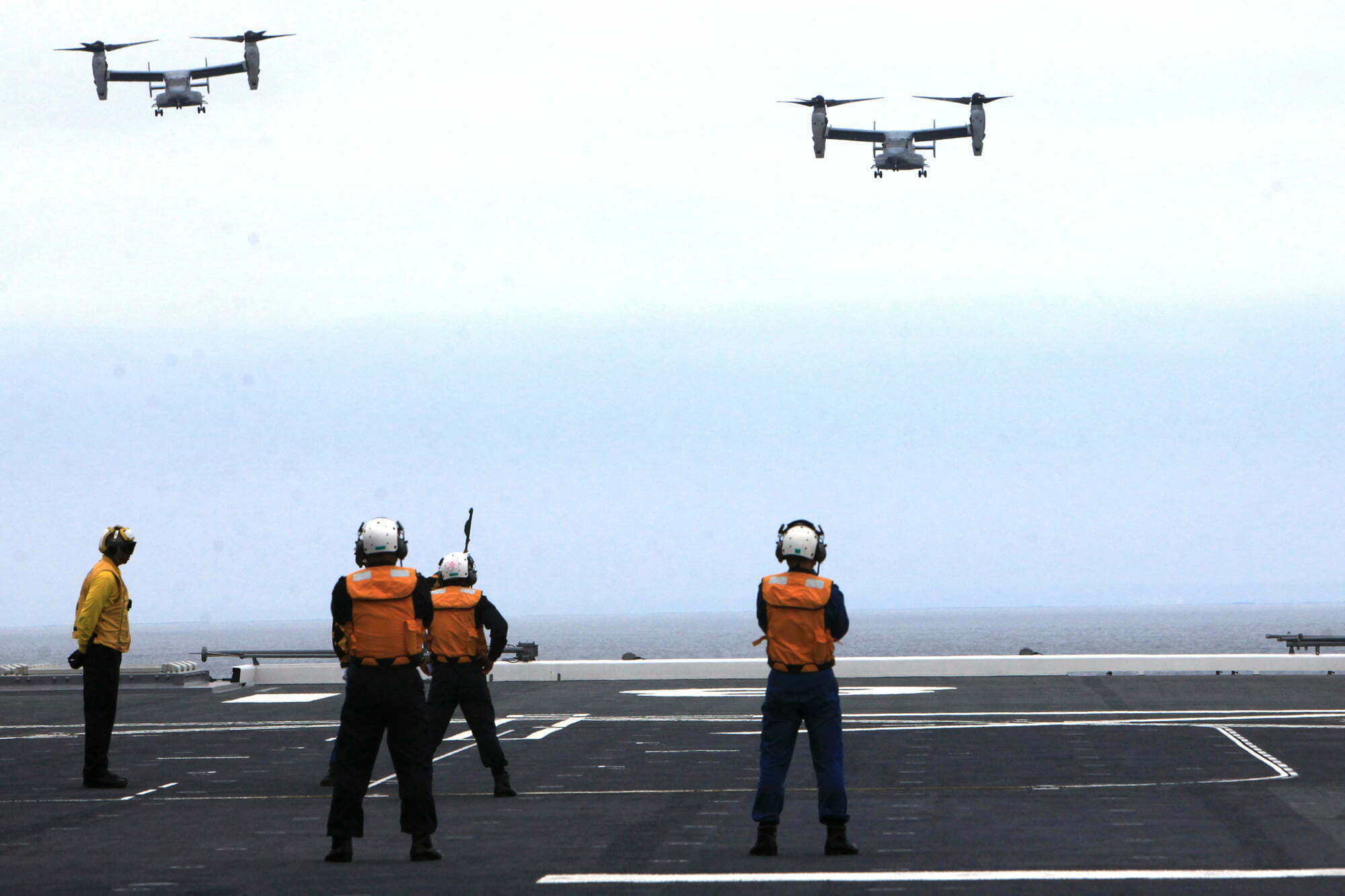2015-06-02 By Robbin Laird
When I first encountered maintainers of the Osprey several years ago at New River, North Carolina, those pioneers referred to themselves as members of the Osprey nation.
As the Osprey became a reality for the USMC, and many Ospreys joined those early few, the term would now encompass not only Marines but Air Force operators. In fact, the pilots are all trained together by the USMC for their initial training.
As the US Navy is about to add the Osprey to its carrier fleet, and the Japanese have made their first buy of aircraft, others are clearly interested in joining in the Osprey Nation.
But there is a challenge to global growth, namely, the current sustainment process.
The USAF and USMC users of the aircraft are high demand assets and are already challenging the current sustainment system managed by the US Navy working with Bell-Boeing.
And it is clear from discussions with Marine Corps members of the Osprey nation that there is concern that as users are added, if the current approach is not modified, that parts will be in scarcer supply for their own use.
This is an important subject and I will return to ways to reshape the current system in a separate piece.
But in this piece, I want to highlight our discussions with Boeing during the visit to Boeing’s Philadelphia site.
A baseline briefing presented during the visit highlighted the demand side in terms of numbers of aircraft.
There are currently 295 field aircraft with 14 USMC and 3 AFSOC operational squadrons.
There are now USMC and AFSOC aircraft deployed abroad, in the UK and Japan.
There are now more than 260,000 flight hours on the fleet which provides a realistic picture of the performance of parts and of the supply chain.
The program of record will produce around 500 aircraft with international sales to come on top of the basic 500 aircraft.

And there is capacity to support additional domestic or international sales in terms of the manufacturing process.

But there have clearly been shortfalls on the supply side.
And those shortfalls have been driven by many factors, which I will discuss in the next article, but shortfalls there are and getting a better process in place to ensure that they do not happen, as there is a wave of international sales is crucial moving forward.
Currently, there is a performance based logistics contract in place but for only some of the parts.
The Bell-Boeing team has a PBL with NAVAIR currently for five years with a three year extension and they are currently working for another two-year extension.
Bell-Boeing and the government have a readiness team which has collected the baseline data on parts performance, operations and supply.
The USAF participates through AFSOC as well as NAVAIR. The readiness team is supported by an advanced IT system, built through a team effort by government and Bell-Boeing, to collect and process the data.
Data is becoming more available, given the length of the program, the number of flight hours, and the global operations of the fleet, to provide a solid baseline for reworking the sustainment system and approach.
In a briefing provided during the visit, the Boeing Logisticians highlighted that the IT system, called CAMEO, has matured enough to allow for the government and industry to sort through alternative methods for dealing with sustainment challenges.
At the heart of the challenge is that the government buys on a 12 month cycle, and parts demand may well not respect a 12 month forecasted cycle.
As one Logistician put it: “a challenge is to get out of the 12-month mode into a more rapid action decision making process with the ability to leverage the data generated by operational realities.”
The industry team has field representatives deployed with the force to provide for ground embedded support by CAMEO Support Representatives or CSRs whose tasking is to ensure that the field deployed data collection systems are working to maximum effectiveness.
“Those experts are in the field making sure that the equipment is all working the way it should, that data is being captured and utilized to support the maintenance process,and reporting back any shortfalls.”

Data is generated by the aircraft itself and offloaded by maintainers and then that data over time has been forged into a large data base with a suite of analytical tools called the V-22 Readiness Integration Center or RIC.
The challenge is to leverage the data to sort out the best methods to match supply with demand in terms of parts and parts performance.
As another Boeing Logistician put it:
Condition-based maintenance is clearly one way ahead.
Here one leverages the sensors on the aircraft with regard to very accurate, real-time conditions of individual parts to determine realistic maintenance and supply needs.
In addition, applying statistical and predictive modeling tools leverages maintenance activity to better understand emergent demand for supply posture.
It is about seeing the incoming demand spikes before they actually spike, so you can prepare your supply posture appropriately, and understanding the lifecycle of components so you can better plan your maintenance processes.
In other words, the operational experience, the parts performance history with more than 260,000 operational hours, and the maturing CAMEO/RICsystem provide a solid, enabling foundation for reshaping how best to manage the supply chain and to ensure the global reach of supplies to the operational fleet.
Getting this right is crucial not only to sell the plane globally, but support the increasingly global use of the aircraft by the US Air Force and the Marine Corps as well.
And getting global support to global customers coupled with better support to deployed Marines and airmen can only lead to the one helping the other.
It is about a globally deployed supply chain working to optimize operational performance, and not having a taut 12-month order cycle limiting the global opportunities for the program or for the US and its allies.
Editor’s Note: The video above shows Gen. Nakatani, the Japanese Defense Minister, arriving outside the Pentagon and boards an MV-22 Osprey attached to Marine Helicopter Squadron One (HMX-1), Arlington, Virginia, April 29, 2015.
The flight was part of several events promoting a strong working relationship between Japan and the United States Marine Corps.
Credit: Headquarters Marine Corps
4/29/15
This is the fifth piece in our Osprey series.
For the first four pieces of a six part series see the following:
https://sldinfo.com/osprey-at-the-eight-year-mark-preparing-for-the-next-phase/
https://sldinfo.com/the-next-phase-for-the-v-22-multi-missionization/
https://sldinfo.com/navigating-the-future-for-the-v-22-kristin-robertson-discusses-the-way-ahead/
The visit to the Boeing facility was done by Robbin Laird and Murielle Delaporte, with Delaporte’s pieces to appear in the French press later this summer.


